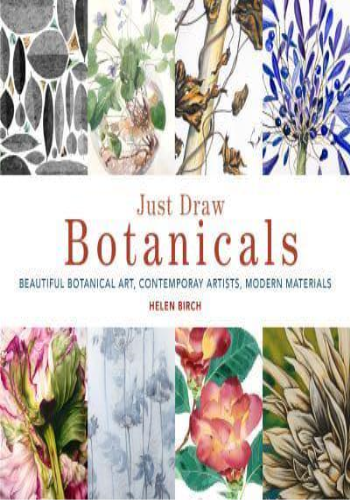Petite in size but packed with inspiration, Just Draw Botanicals presents 90 beautiful, contemporary botanical artworks in a range of media and styles.
Each spread includes a stunning work of art paired with a discussion of the artist's approach to creating it, including the techniques employed. At the bottom of the page, find tips on the tools, materials and methods used to make the piece.
A hyper-realistic blackberry, a watercolour sketch of a bunch of mint in a glass, a detailed scratchboard study of three pussy willow twigs, a tribal-style pattern inspired by different leaf shapes, an abstract image-transfer print of a milkweed plant… the techniques and subjects covered are diverse. With these and more artworks - created in a variety of media, including watercolour, coloured pencils, oil, pen and ink, mixed media and pencil - explore:
- Shape, form and light
- Harmonious colours
- Contrasting elements
- Fine detail
- Capturing movement
- Cropped compositions
- Using negative space
- Anatomical accuracy
Whether you are an artist looking for fresh ideas for creating botanical art or simply enjoy looking at nature-inspired images, this portable volume is a rich resource.







